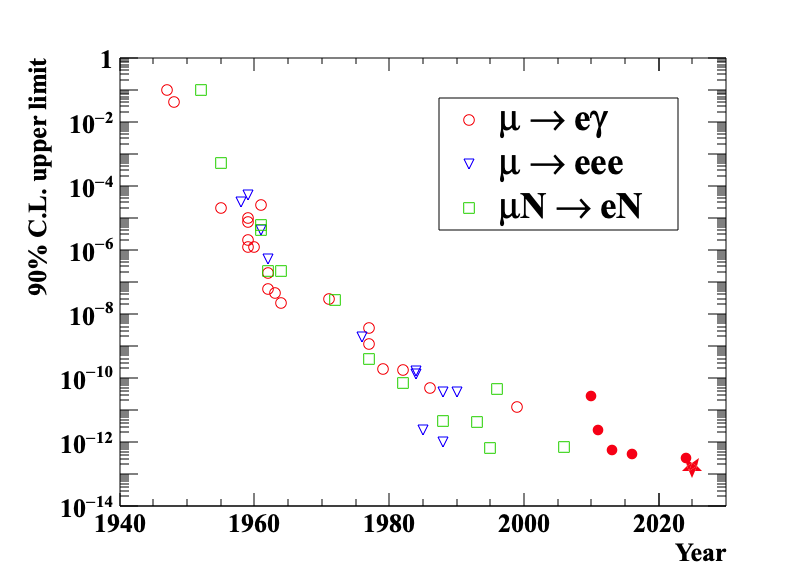Introduction to the MEG/MEG II experiment
The MEG/MEG II experiments at Paul Scherrer Institut (PSI) have been designed to search for the charged-lepton-flavour-violating rare muon decay, μ+ → e+γ, with a sensitivity of 10-13–10-14.
The decay μ+ → e+γ is strongly suppressed down to 10-54 by the Standard Model with neutrino oscillation, but is predicted to have a sizable branching ratio of 10-11–10-14 by various new physics models beyond the Standard Model.
Thus, μ+ → e+γ is an interesting probe to search for new physics.
We utilise the most intense DC muon beam at PSI at 107 μ/s and have developed innovative detectors to precisely measure decay products of positrons and photons.
Using them, we have been updating the most stringent upper limit on the branching ratio of μ+ → e+γ and leading experiments to search for charged lepton flavour violation (CLFV) with muons, as shown below.

We plan to continue to collect data until 2026, searching for μ+ → e+γ with an approximate sensitivity of 6 × 10-14.
Other physics have been investigated with the MEG/MEG II apparatus.
We have precisely measured the branching ratio of a radiative muon decay in the Standard Model, μ+ → e+ννγ. Searches for new particles, such as axion-like particle, have also been performed in charged-lepton-flavour-violating channels of μ+ → e+aγ and μ+ → e+X, X → γγ. Moreover, we have been searching for a hypothetical X17 particle, reported by the ATOMKI collaboration.
We have precisely measured the branching ratio of a radiative muon decay in the Standard Model, μ+ → e+ννγ. Searches for new particles, such as axion-like particle, have also been performed in charged-lepton-flavour-violating channels of μ+ → e+aγ and μ+ → e+X, X → γγ. Moreover, we have been searching for a hypothetical X17 particle, reported by the ATOMKI collaboration.
Our physics results are listed on the Documents page.